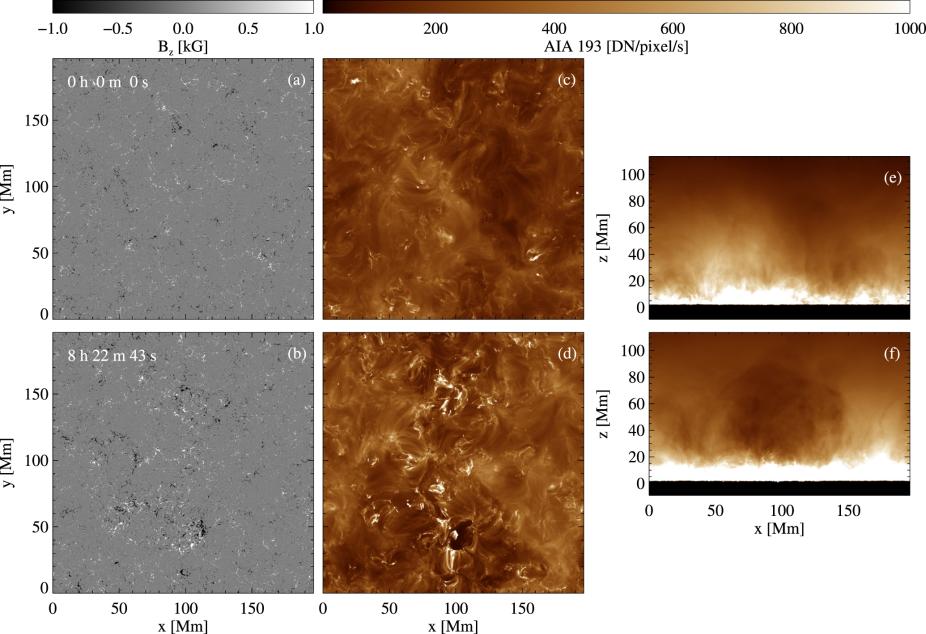ApJ: Feng Chen, Matthias Rempel, and Yuhong Fan present a comprehensive radiative magnetohydrodynamic simulation of the quiet Sun and large solar active regions. The 197 Mm wide simulation domain spans from 18(10) Mm beneath the photosphere to 113 Mm in the solar corona. Radiative transfer assuming local thermal equilibrium, optically thin radiative losses, and anisotropic conduction transport provide the necessary realism for synthesizing observables to compare with remote-sensing observations of the photosphere and corona. This model self-consistently reproduces observed features of the quiet Sun, emerging and developed active regions, and solar flares up to M class. Here, we report an overview of the first results. The surface magneto-convection yields an upward Poynting flux that is dissipated in the corona and heats the plasma to over 1 MK. The quiescent corona also presents ubiquitous propagating waves, jets, and bright points with sizes down to 2 Mm. Magnetic flux bundles emerge into the photosphere and give rise to strong and complex active regions with over 1023 Mx magnetic flux. The coronal free magnetic energy, which is approximately 18% of the total magnetic energy, accumulates to approximately 1033 erg. The coronal magnetic field is clearly non-force-free, as the Lorentz force needs to balance the pressure force and viscous stress as well as drive magnetic field evolution. The emission measure from log10T=4.5 to log10T>7 provides a comprehensive view of the active region corona, such as coronal loops of various lengths and temperatures, mass circulation by evaporation and condensation, and eruptions from jets to large-scale mass ejections.

Coronal dimming created in the quiet Sun by an emerging active region. Panel (a): Bz at the photosphere, before the active region emerges. Panel (b): Bz as in panel (a), but when a flux concentration (at (x,y) = (120,50)) starts to form. Panels (c) and (d): synthetic AIA 193 channel images from the top view. The time stamps are the same as in panels (a) and (b), respectively. The dimming region is visible in the lower half of the field of view. Panels (e) and (f): synthetic AIA 193 channel images from a side view along the y-axis. The time stamps are the same as in panels (a) and (b), respectively.